Hey Ancient Echoers!
This week this lil newsletter hit, and then surpassed, 500 subscribers !!!
I am SO grateful for everyone who has been supporting me on this very fun journey! I’m planning on trying to post more regularly from now on, maybe every Tuesday or Friday? We’ll all find out together very soon when I work out how to use analytics.
I also have a guest post on Medea coming out very soon for
’s Substack , which is an absolutely stunning publication with all sorts of essays about history, literature, and more! You can have a gander by clicking the link above, and keep an eye out for yours truly, appearing there very soon.I’ve been so excited to write about Medusa, so I think a 500 subscriber celebration post is very fitting for what is my fave topic to talk about from Greek myth.
Let’s do it!
THE CONTEXT
Hesiod describes Medusa and her Gorgon sisters Sthenno and Euryale in his Theogony (you remember the farming poem), and of course Ovid later brings her up in Metamorphoses (he would have been absolutely all over hair being transformed into snakes). The Gorgons also get a shout out in Aeschylus’ Prometheus Bound. And that’s all very interesting, but my primary source for learning about Medusa has been Natalie Haynes.
I wrote three (3) separate essays on this novel in my second and third years of uni, and in 2022 went to the ancient Roman Baths in Bath to listen to Haynes do a talk on Medusa, so I’m sorry to the old men, but she’s taking the limelight today.
Haynes rewrites the ‘monstrous’ Medusa to reflect her story (as Ovid told it), not just the general one we got handed down to us from the patriarchy, featuring words such as ‘hideous’ and ‘inhuman’. This story instead features sisterhood and sexual assault, flipping the ‘original’ myth on its head. And in my humble opinion, it’s incredibly well done.
Another piece of ancient context I think is very cool is the concept of a Gorgoneion. This was a symbolic head of Medusa used on everything from architecture to metal work, and was perceived to be a protective symbol.
Gorgoneions could be found on ancient breastplates, and are featured heavily on Athena’s shield or breastplate in ancient depictions, for reasons which will be made clear very soon…
See the tiny Medusa head on her chest?? I spent the whole time I travelled around Europe running around museums and shouting ‘LOOK’ at my partner when I found a Gorgonieon, so I’m very well-practiced at this game.
THE STORY
Medusa is one of three Gorgons, her sisters being Sthenno and Euryale. According to Hesiod and Apollodorus they were offspring of the sea-god Phorcys and his sister Ceto (it’s worth remembering that incest is generally considered pretty normal in a) Greek myth and b) between gods).
In Ovid’s version of the myth (which Haynes uses for Stone Blind) Medusa is a perfectly normal child. No snakes for hair or anything, just a happy kid chilling in their cave-home by the sea, playing in the waves and being looked after by her two decidedly Gorgon-like sisters.
It’s all very peaceful and happy until Poseidon shows up, sees Medusa and thinks ‘Aha! A young girl who’s life I haven’t ruined! Perfect.’ He promptly corners her in a nearby Temple to Athena, and rapes her. There’s no motive, other than him being a colossal idiot.
Medusa runs home, understandably distraught, to hide in her cave. At this point, Athena finds out what’s been going on in her sacred temple and gets pretty angry. Here’s how I imagine her thought process went:
‘How dare such a thing happen on my sacred ground! How can I fix this atrocity that has occurred? I know! I will curse the girl who Poseidon raped forever. That’ll teach her.’
The next morning, Medusa wakes up with snakes for hair, unable to look at anything or anyone without turning them to stone. Then, as if matters weren’t already bad enough, a random dude turns up (also being helped by Athena, Hermes and Hades?), and decapitates her with a sword.
Sthenno and Euryale go quite mental at this point, but luckily the guy has been gifted lots of presents from the Gods for no apparent reason, so manages to fly away on his magical winged shoes with Medusa’s head.
This, of course, is Perseus, who has been instructed by a far-off King to bring him the head of the Gorgon Medusa, or he will force his mother (who was also raped by a God btw, this time Zeus was the perpetrator, in the form of ‘a shower of golden rain’) into marriage. Seems fair, right? At this point I’d like to share this depiction of Perseus from Stone Blind which I very much enjoyed:
'He can't do anything for me, he can't do anything for himself, he's useless. He's just a bag of meat wandering around, irritating people.'
In some versions of the myth when Perseus beheaded Medusa, Pegasus, a winged horse, and Chrysaor, a giant wielding a golden sword, sprang from her body, offspring from her rape by Poseidon.
So Medusa’s story is short and brutal, and her reputation for being a hideous, blood-thirsty killer is based off of… nothing. Well, I supposed it’s based off of the patriarchal need to villainize women, but ANYWAYS—
SOME ART (trigger warning - graphic depictions/blood)
I tried to condense the story a bit because I have LOTS to talk about down here this week. First of all you should have a quick look at this short article about depictions of Medusa through the ages – it’s so interesting. I did a whole presentation on Medusa and the Gorgons when I was battling my way through the first term of my Classics MA and actually got a really good grade?? So you guys can trust me with this one.
I’m afraid there aren’t any cutesy/cool paintings of Medusa by John William-Waterhouse (I miss him) this week, this is kind of setting the tone quite well for the rest of the art. There’s LOTS OF BLOOD.
This one is very cool because Caravaggio painted this onto a shield! Like because of the concept of Gorgoneions? And guess who SAW it in the Uffizi in Florence ?? (hint: it was me)
I actually will never be able to talk enough about this sculpture. There’s so much that’s cool and disturbing about it, but my favourite fact is that it’s placed in a Piazza Della Signora in Florence, with several other famous sculptures. And when they had it installed they put it in a spot which the other statues faces were turned towards.
So it looks like Medusa’s head has turned them to stone?? It’s SICK. Look it up, the history of the square and the art is soo interesting.

Cellini also carved his head into the back of Perseus’ head, but you’ll have to Google that because I’m running out of space<3 Also, please check this article out about a woman’s response in 2008 to Cellini’s sculpture. It’s amazing.
There’s also a painting of Medusa by Peter Paul Rubens, but I actually don’t want to include it here because I find it SO terrifying and gruesome, so you can check that out in your own time too, if you’re feeling brave.
I just discovered this one today! Barney used her daughter to model for this, which I think is pretty cool. No further notes, I just liked how it looked.
THE END
That was VERY LONG I’m sorry. I should have known I wouldn’t have been able to be succinct about Medusa. I hope you enjoyed it, and/or learnt something new!
I really wanted to talk about how the Medusa head has become a symbol for SA survivors and feminism but there just wasn’t space, so if you’d be interested in hearing about that I may consider doing a separate post. Let me know!
Until next time<3


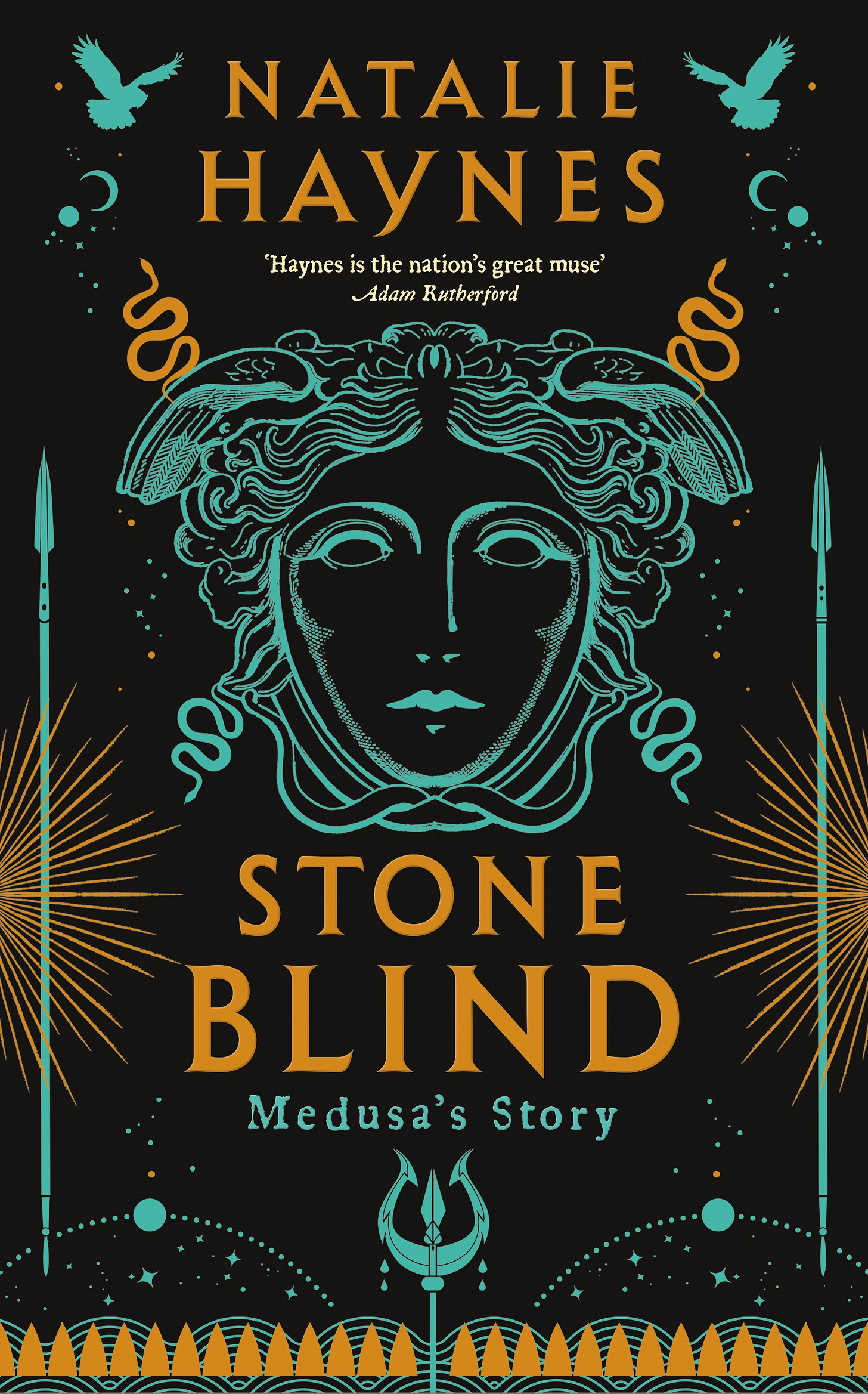
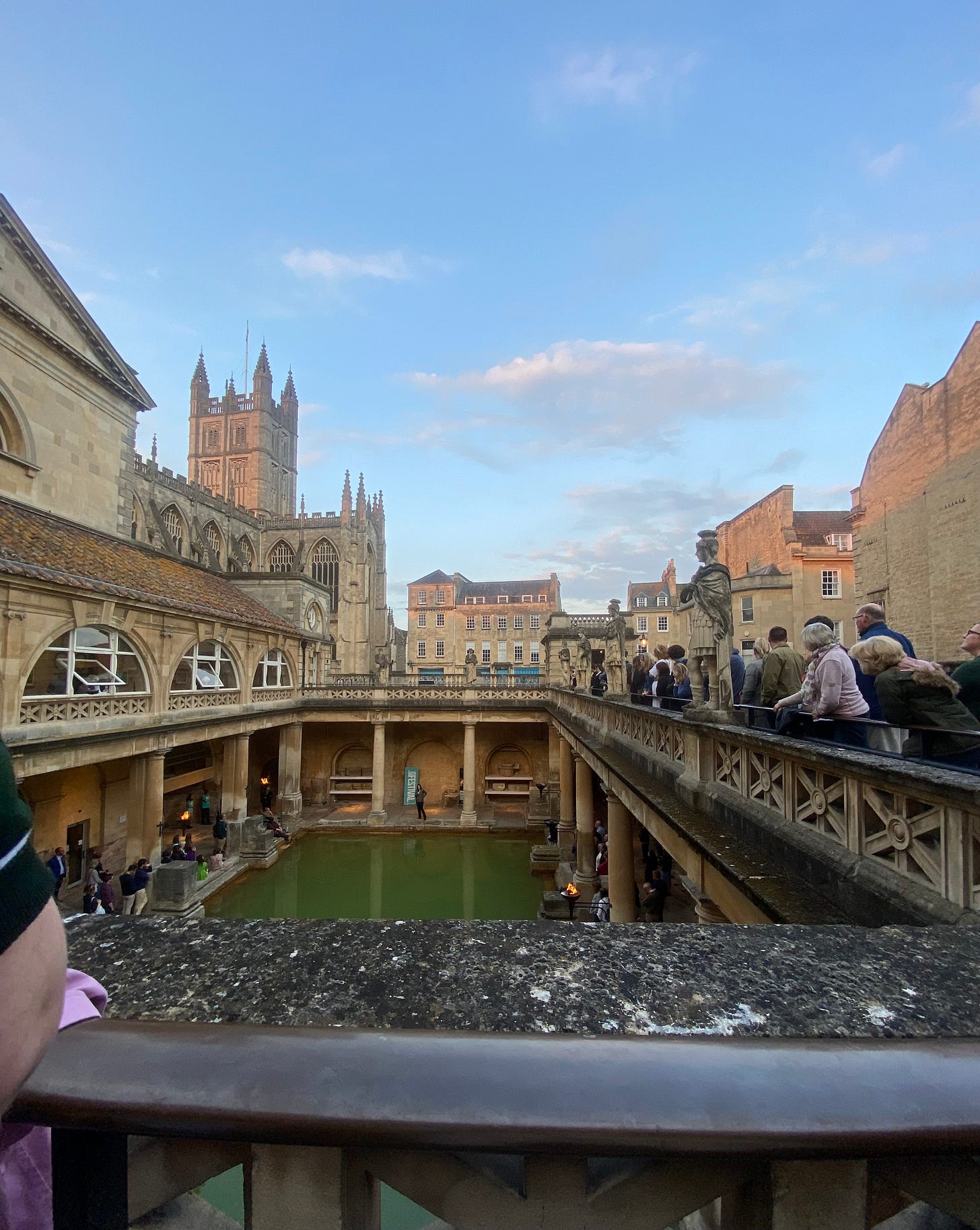
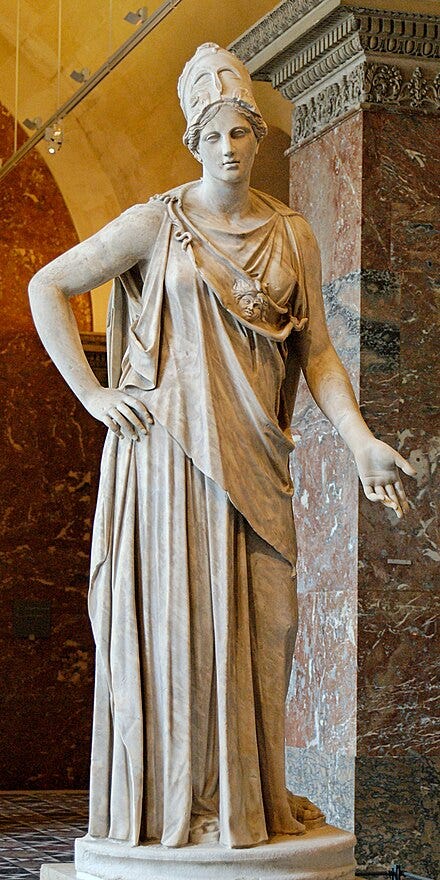



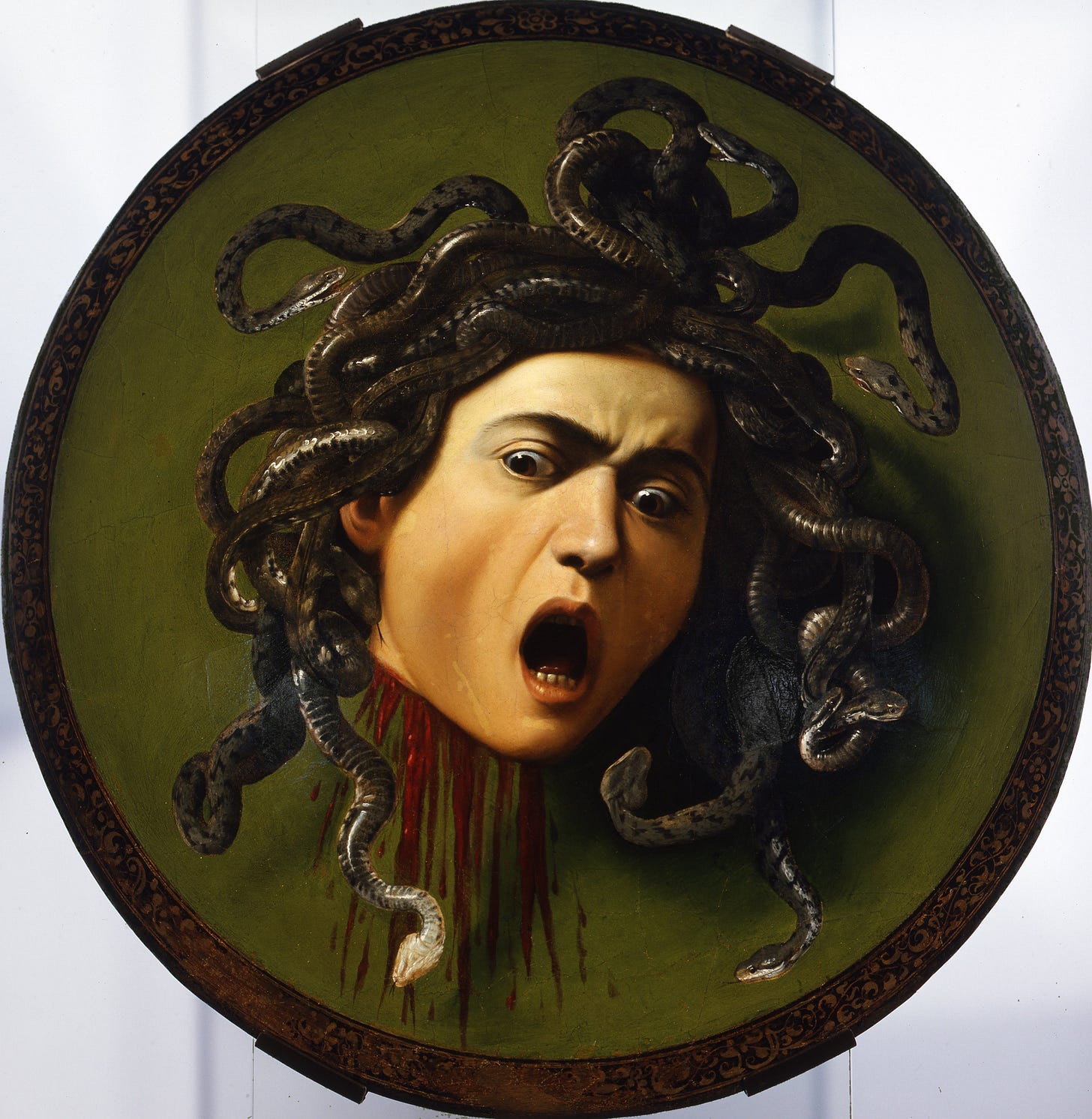
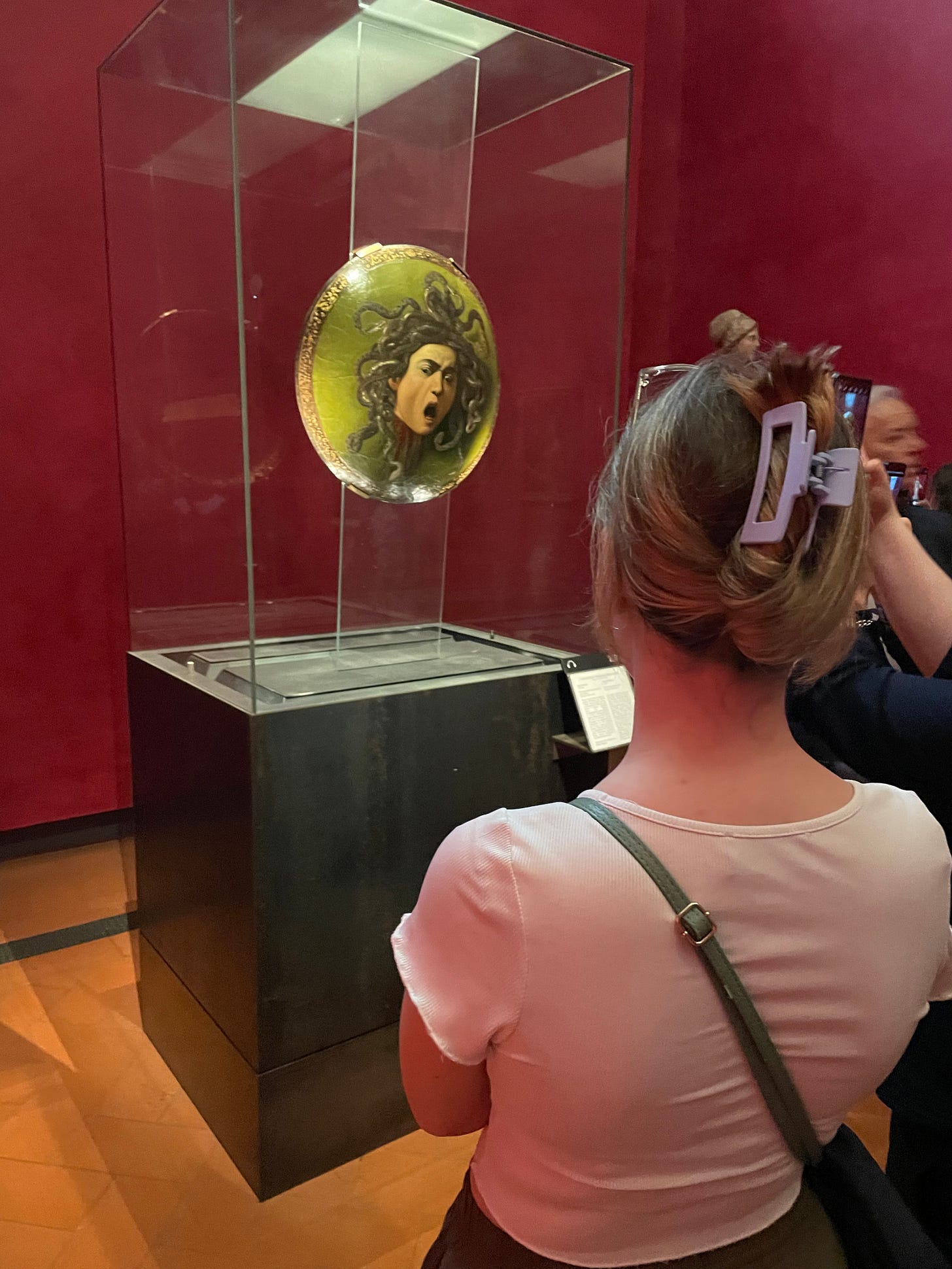
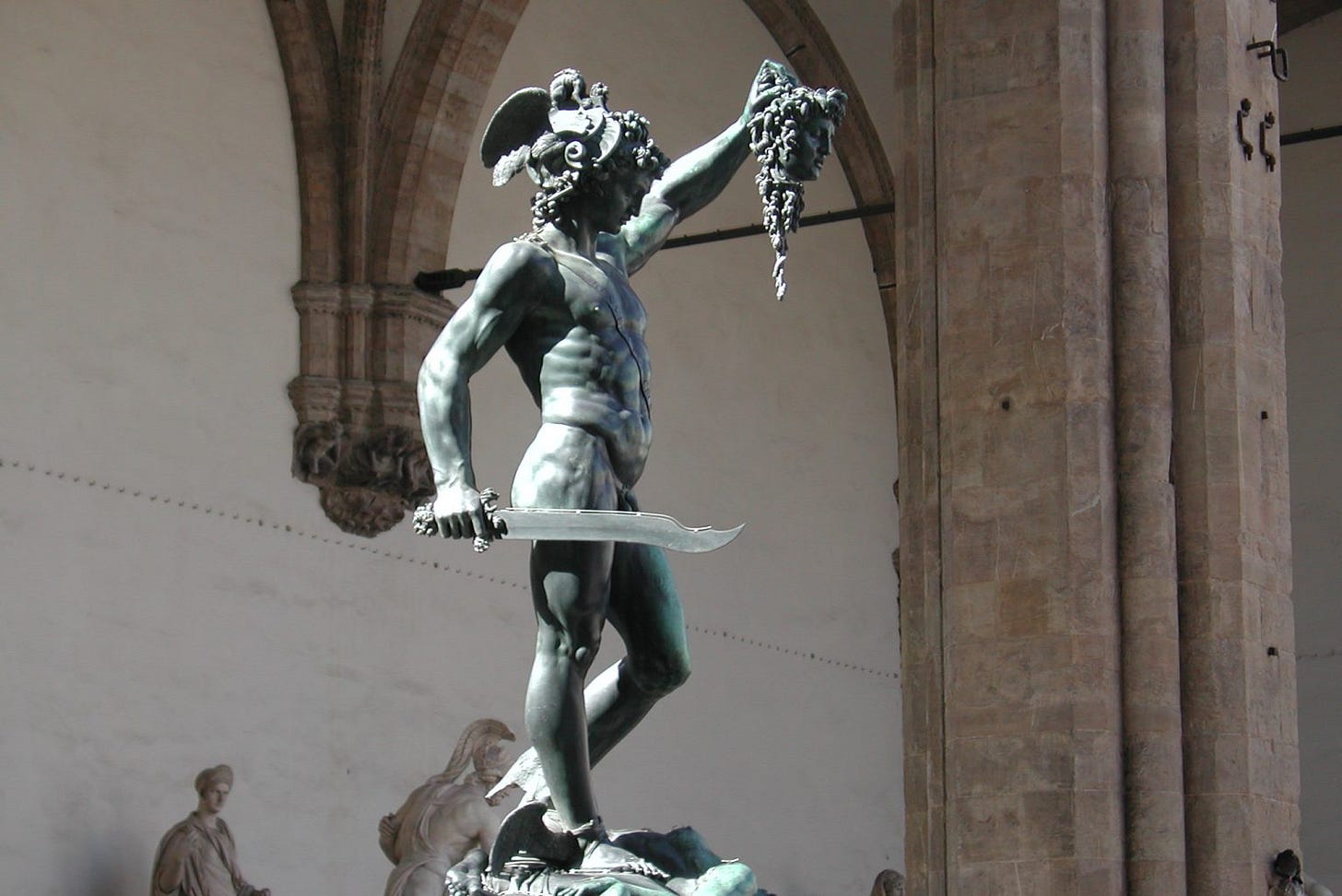
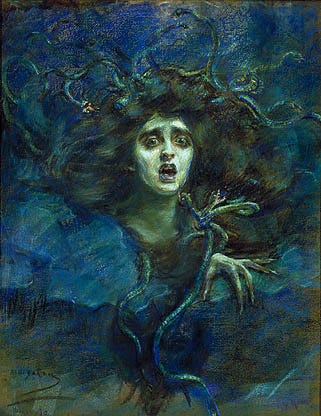
Would love the Medusa as a icon / muse for sexual assault survivors!
I don't roll on the floor often after spitting the coffee all over my Babylonian rug, but this post was the exception.